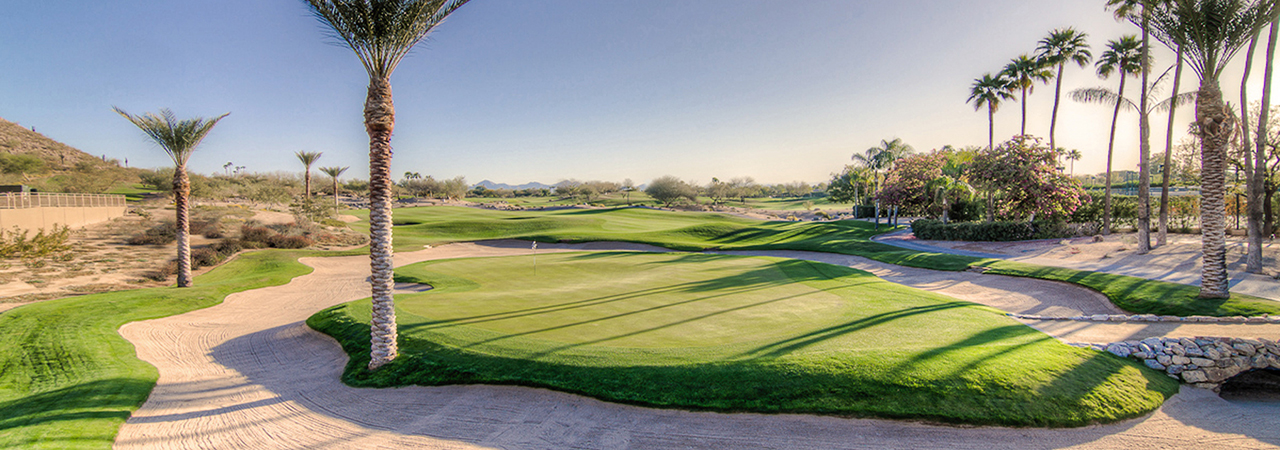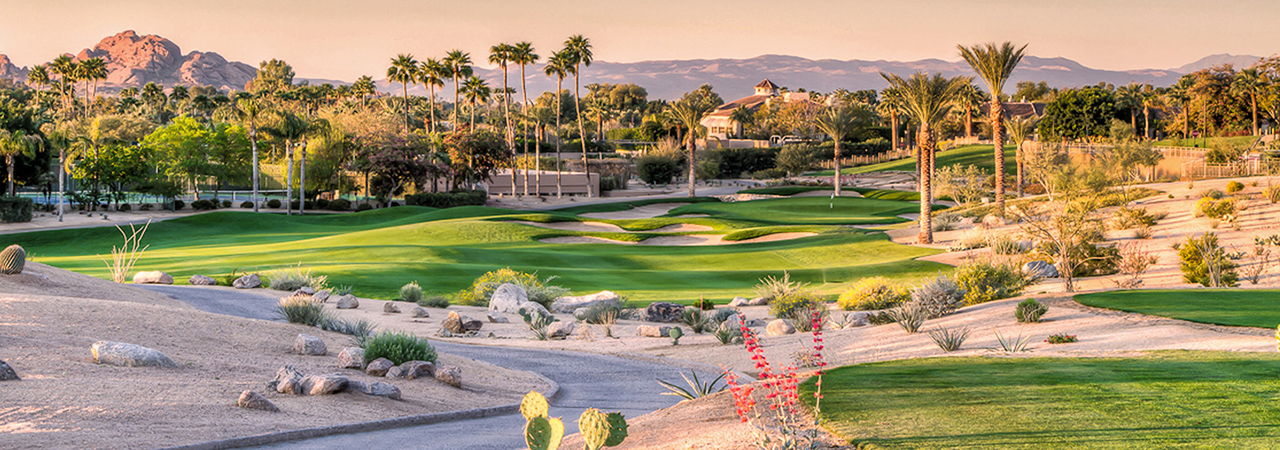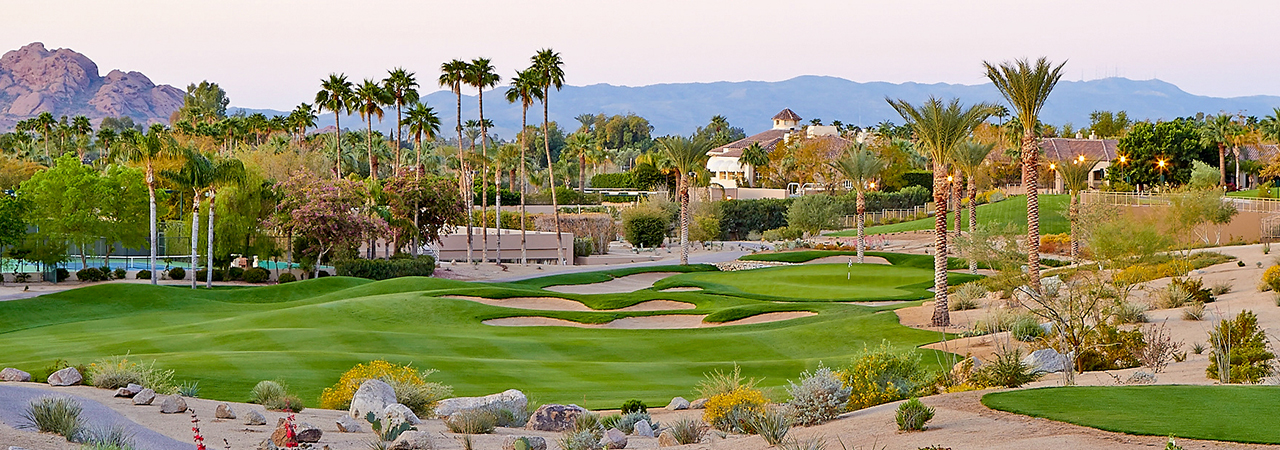Project Description
Project Overview
In order to make room for a new ballroom and resort expansion project, a new plan was developed for reconfiguring the finishing holes of the Oasis Nine at the Phoenician Resort. As part of the work, some of the adjacent Desert Nine was also remodeled. The work was completed for Starwood Resorts.
Reconfiguration work to golf clubs requires that the integrity of the existing course be preserved. In this work, we also had the complexities of preserving par, yardage and the flow of the two nines involved in the remodeling work. In addition, we had to allow play during the work, which meant sequencing the work so that a minimum of 18 holes could be available for play at all times.
The design process involved four concepts, each removing ponds from the existing layout in favor of a more environmentally friendly and water conservation desert landscaping theme. The selected approach was the “Sand Island” design, a concept where we surrounded the No. 9 Hole of the Oasis Course with a sea of sand. Date palms were added to reinforce the oasis theme, providing an interesting scale to the long and narrow green. A small pot trap sits within the island as an interesting design detail.
Historically, the Phoenician Golf Club dates to the 1940s when golf architect David Gill first laid out the grounds of The Valley Club, an 18-hole course with interesting holes flanking the east end of Camelback Mountain. Forrest Richardson played the course extensively during his tenure on the Camelback High School Golf Team. Among his favorite holes was a unique uphill par-3 with an elevation change of 30 feet. “It was fascinating,” he recalls. “I once asked David Gill about it and he told me it was the best way to get up along the side of the mountain, so he created this blind green where the flagstick had to be eight tall.”
In the 1970s Richardson’s mentor, Arthur Jack Snyder, completely re-designed the course, creating the Phoenician. Snyder’s work was carried out for a Canadian developer who had already platted certain parcels for Synder to use as golf holes. “Some were not wide enough and the angles were awkward,” notes Richardson. “Jack made the developer sign off on a few areas where it was simply ill-advised to force in golf holes, especially along housing.” None-the-less, the course was a huge success and it set in motion what would become one of America’s most famous and storied modern resort properties.
Eventually the Phoenician added nine more holes bringing the total to 27-holes. In the early 2000s Richardson was brought in to study future development opportunities, including the possibility of returning the course to 18-holes. Starwood put this work on hold, eventually selling the resort, but with a vision for future reconfiguration of the golf course.
Quick Facts
Scope: Planning, Design, Approvals, Bidding, Construction Documents, Construction Observation Services
Budget: $1.5 million USD
Completion: 2011
Owner: Starwood Resorts
Address: 6000 East Camelback Road, Scottsdale, Arizona 85251



